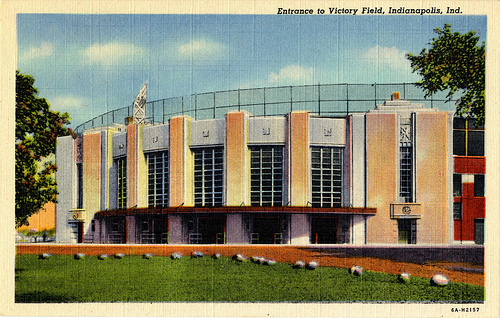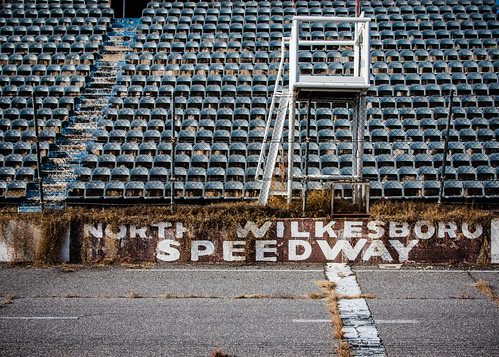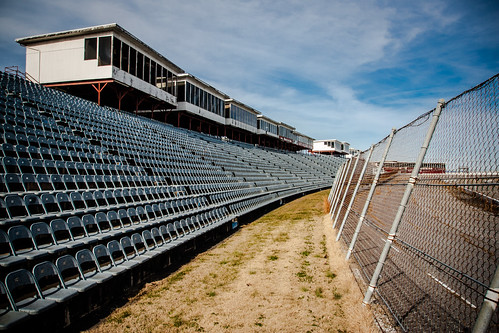Photo (source): A postcard of the stadium in its prime.
Photo (source): Bush Stadium after years of decay.
Social conditions in early 1900’s America saw a massive shift in the way the working class lived. Electricity, automobiles, health and safety laws, worker’s rights legislation, improved public education, and government funded infrastructure afforded the working class the opportunity to thrive. Progress meant that the American public gained more time for leisure activity. Many Americans sought to occupy their free time devoted to baseball.
Baseball was a package ripe for entrepreneurs to capitalize upon. The drama of the game had its winners and losers, heroes and villains, its loyal followers, and content perfect for radio and print media transmission. The stadium became a cathedral where the faithful throngs could worship the game whilst owners reaped the economic rewards. A team worthy of reverence is, therefore, deserving of a stadium demonstrative of its glory.
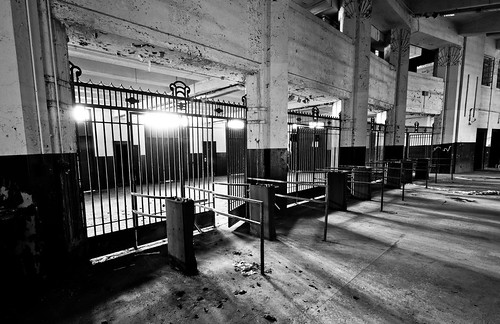
Photo: The main gate turnstiles at the abandoned stadium.
During the golden age of baseball stadiums were erected as a testament to the game. In 1931 the Art Deco stylized stadium Perry Field opened its gates to fans of the minor league Indianapolis Indians. The name held until World War II when the field was rechristened to the patriotic Victory Field. Once the field was sold to the city of Indianapolis in 1967 it was renamed to its current namesake Bush Stadium.
In its prime Bush Stadium was the template for what other baseball stadiums should aspire to. The red brick lined outfield was covered in ivy. During gameplay the scoreboard had to be manually changed to reflect current statistics. Unobstructed views meant that there was not a single bad seat in the house. The venue played host to American Association, Pacific Coast League, International League, and Negro League games.
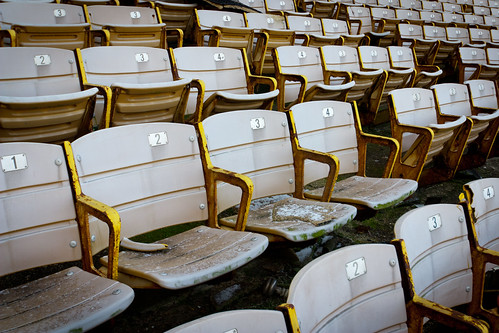
Photo: Cold empty seats without the warm presence of adoring fans.
Baseball games continued at the park until 1996 when the Indianapolis Indians moved to the more modern Victory Field. For two years the stadium had an identity crisis as the infield was ripped out to make a dirt racing track known as the 16th Street Speedway. For nearly a decade the stadium fell into disrepair. For a time the once beloved venue became a graveyard for vehicles traded in for the government “cash for clunkers” incentive program.
Once the cars were cleared away Indianapolis began to stoke development interest in the neglected property. The stadium is currently being renovated into an apartment complex that will preserve much of the aesthetics of the original field. The project is part of a larger urban renewal plan to reinvigorate the area into one that fuels America’s new leisurely pastime: consumerism.
Video (source): Plans for the apartment complex built upon the ruins of Bush Stadium.
Resources:
Abandoned USA – Photos of the stadium
Ballpark Digest – Report that the stadium is being converted to apartments
Develop Indy (PDF) – Synthesis Incorporated rendering of the stadium renovation
Develop Indy (PDF) – Press release signaling the start of the renovation
Ecolaborative – Seats from the stadium are being reused as bus stop seats.
Historic Indianapolis – Photos of the stadium.
Indy Star – Gallery with photos of the stadium in its prime.
Jalopnik – Article on the stadium being used in the Cash for Clunkers program
Minor League Parks – Entry for Bush Stadium
Queen City Discovery – Extensive walkthrough and photos.
Steve Hardin – Photos from the 16th Street Speedway.
Wikipedia – Entry for Bush Stadium.
Wikipedia – Entry for the stadium’s current namesake Donie Bush.
WTHR13 – States that demolition has begun.
YouTube – WISH-TV report on the apartment complex development.
